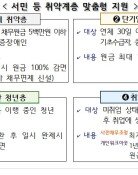A freak learns architecture in the world
A freak learns architecture in the world
Posted August. 27, 2018 08:32,
Updated August. 27, 2018 08:32

Born in Osaka, Japan in 1941, Tadao Ando is an unyielding figure by nature. Tokyo in Kanto Province has been shaped into a city led by the government while Osaka in Kansai Province has been built by businessmen who put pragmatism over public interests.
The 76-year-old Japanese architect travelled from 1965 for four years to visit some European and African countries, the Unites States, Madagascar, and Singapore. He did not attend a university, but he learned architect by exploring various architectural masterpieces around the world, which were as educative as textbooks. At a crematorium on the Ganges river, he realized emptiness and purposelessness. At the age of 29, he opened an atelier, starting from designing small-sized urban housing units. The culture of Kansai Province embraced and accepted this bizarre architect, laying the foundation for him to grow further.
He is famous for his architecture designs that are embedded naturally into surrounding landscape and nature. For example, Naoshima used to be a polluted island in Japan due to metal processing factories. However, Tadao turned this place into one of the most famous tourist attractions by designing three buildings - Benesse House Museum (1992), Chichu Art Museum (2004) and Museum of Lee Ufan (2010).
Winning the Pritzker Architecture Prize in 1995, often referred to as the Nobel Prize of architecture, the self-taught architect taught at Harvard, Yale and Columbia. Traversing the America Continent in his 20s turned out to be one of his precious assets. During early days of his trip, he was impressed by moderate lifestyles and simplistic artefacts of Quakers. In particular, U.S. pioneers resonated with him. His projects were erected in many parts of the United States, including New York, Massachusetts, California and Texas – where the New Modern Art Museum of Fort Worth was built in 2002.
Ando has left his footprints all over the world including Monterrey in Mexico, Shanghai in China, Taichung in Taiwan and Jeju Island in Korea. The beauty of Tadao’s projects is explicitly demonstrated in peripheral areas. He has reflected on what architecture means to its surrounding environment while strolling around the former Vietnamese imperial capital city of Huế and visiting traditional markets. He frequently goes to Abu Dhabi and Bahrain. Currently, he is indulged in realizing his bold geometrical design via Louvre Abu Dhabi, an Arabic word of happiness, and the Bahrain Archaeological Museum. Still in slim shape, only 63 kilograms just as he was 18, the architect feels the heart beating today.






